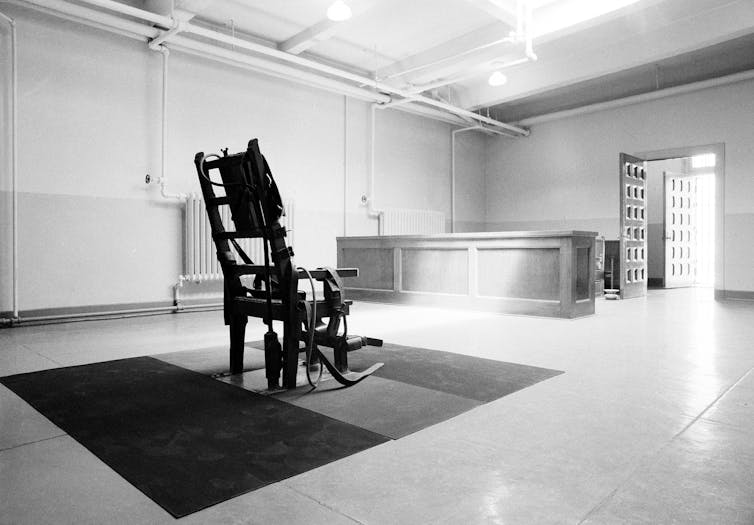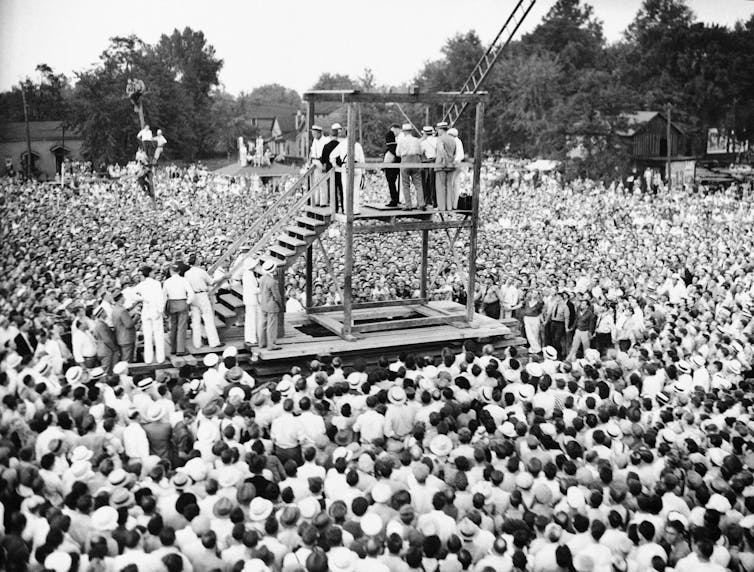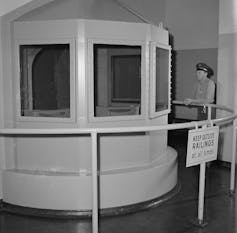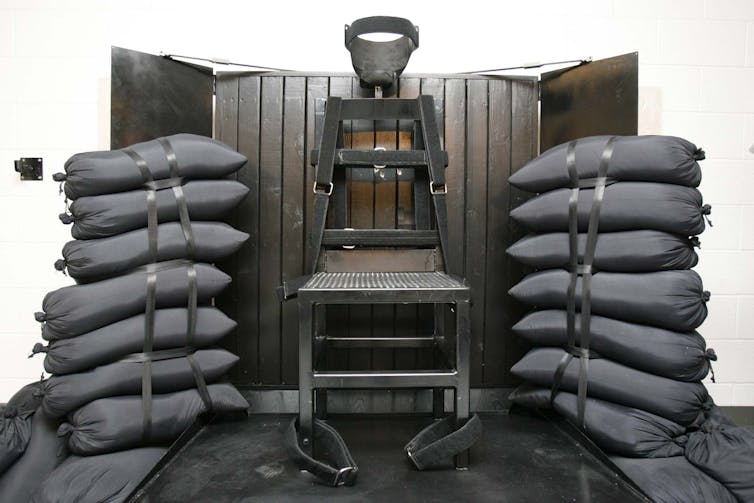 |
| Empty, but for how long? AP File Photo |
Set to take effect on Christmas Eve, the new regulations authorizing an alternative to lethal injections – the method currently used in federal executions – were announced by the Justice Department on Nov. 27.
The federal move follows the example of several states, including Oklahoma and Tennessee, that have revived alternative methods in the face of challenges to their lethal injection protocols and problems in the supply of drugs needed in the process.
It is not clear whether the administration actually intends to employ the newly announced methods. It may only want to have them in reserve if any of the individuals scheduled for execution before January’s inauguration – five, according to the Department of Justice – should succeed in challenging the current execution protocol.
What is clear is that these new regulations send a message about the lengths the administration will go to kill as many death row inmates as possible before Joe Biden takes office and, as expected, halts the federal death penalty.
If the president and Department of Justice succeed in their plan, the period from July 14, 2020, the date of the first of Trump’s federal executions, through January 20, 2021 will be the deadliest in the history of federal capital punishment in nearly a century.
As someone who has studied execution methods in the U.S., I see in the new regulations echoes of a troubled history of less-than-perfect execution methods.
To grasp their full significance, it is necessary to look at the record of hanging, the electric chair, the gas chamber and firing squads. Each of them has been touted as humane only to be sidelined because its use was found to be gruesome and offensive.
Given that history, there are questions over whether the administration’s plans serve any purpose other than continuing a death penalty system deemed to be a cruel outlier among modern societies.
The noose and the chair
Let’s start with hanging.
 |
| Crowds watch as attendants adjust a black hood over Rainey Bethea. AP File Photo |
Hanging was the execution method of choice throughout most of American history, and it was used in America’s last public execution in 1936, when Rainey Bethea was put to death in Owensboro, Kentucky.
When done correctly, the noose killed by severing the spinal column, causing near instantaneous death.
But, all too often, hanging resulted in a slow death by strangulation and sometimes even a beheading.
Given this gruesome record and hanging’s association with the lynching of mainly Black men, by the end of the 19th century the search for other execution methods began in earnest.
The first of those alternatives was the electric chair. At the time it was adopted, it was regarded as a truly modern instrument of death, a technological marvel in the business of state killing.
Hailed by penal reformers as a humane alternative to hanging, the electric chair was first authorized in 1888 by New York state following the report of a commission that concluded, “The most potent agent known for the destruction of human life is electricity…The velocity of the electric current is so great that the brain is paralyzed; it is indeed dead before the nerves can communicate a sense of shock.”
Yet, right from the start, electrocution’s potency was a problem. Its first use in the 1890 execution of convicted murderer William Kemmler was horribly botched. Reports of the execution say that “After 2 minutes the execution chamber filled with the smell of burning flesh.” Newspapers called the execution a “historic bungle” and “disgusting, sickening and inhuman.”
In spite of the Kemmler debacle, the electric chair quickly became popular, being seen as more efficient and less brutal than hanging. From the start of the 20th century until the 1980s, the number of death sentences carried out by this method far outstripped those of any other method.
But electrocutions continued to go wrong, and eventually several dramatic botched executions in Florida helped turn the tide. Included were two executions, one in 1990, the other in 1997, in which the condemned inmates caught fire.
The gas chamber
By the start of the 21st century, states all over the country were abandoning the electric chair. As Justice Carol W. Hunstein of the Supreme Court of Georgia explained, “Death by electrocution, with its specter of excruciating pain and its certainty of cooked brains and blistered bodies,” was no longer compatible with contemporary standards of decency.
 |
| A gas chamber at San Quentin prison from 1959. AP Photo/Clarence Hamm |
This plan was soon abandoned because officials decided it would be impractical to implement it, and states constructed special gas chambers fitted with pipes, exhaust fans and glass windows on the front and back walls for witness viewing. But deaths by lethal gas were never pretty or easy to watch.
Inmates regularly fought against breathing the gas as it entered the chamber. They convulsed, jerked, coughed, twisted and turned blue for several minutes before they died.
Far from solving the problems associated with hangings or electrocutions, lethal gas introduced its own set of horrors to the institution of capital punishment. In fact, by the end of the 20th century, 5% of executions by lethal gas had been botched.
As a result, states used gas as the sole method of execution only from 1924 to 1977, and it was last used in 1999. By then, the gas chamber had become a relic of the past because of its inability to deliver on its promise to be “swift and painless” and its association with the Nazi use of gas to kill millions during the Holocaust.
The firing squad
Finally, the firing squad. Of all of America’s methods of execution, it has been least often used. From 1900 to 2010, only 35 of America’s 8,776 executions were carried out using this method, and since 1976 just three people have faced a firing squad, with the last one carried out in Utah in 2010.

Critics point out that because death by guns evokes images of raw, frontier justice in a society awash in gun violence, this method mimicked something that the law wished to discourage. Nonetheless, Utah revived the firing squad in 2015 due to challenges to the state’s lethal injection protocol.
While it has some contemporary proponents who claim it is the least cruel of all execution methods, the history of the firing squad is marked by gruesome mistakes when marksmen missed their target. In the 1951 execution of Eliseo Mares, for example, four executioners all shot into the wrong side of his chest, and he died slowly from blood loss.
A cruel history, revived
While Trump’s Department of Justice is now holding out the prospect of using these previously discredited methods of execution, it cannot erase the cruelty that marks their history. That history stands as a reminder of America’s failed quest to find a method of execution that is safe, reliable and humane.![]()
Austin Sarat, Associate Provost and Associate Dean of the Faculty and Cromwell Professor of Jurisprudence and Political Science, Amherst College
This article is republished from The Conversation under a Creative Commons license. Read the original article.
[Deep knowledge, daily. Sign up for The Conversation’s newsletter.]